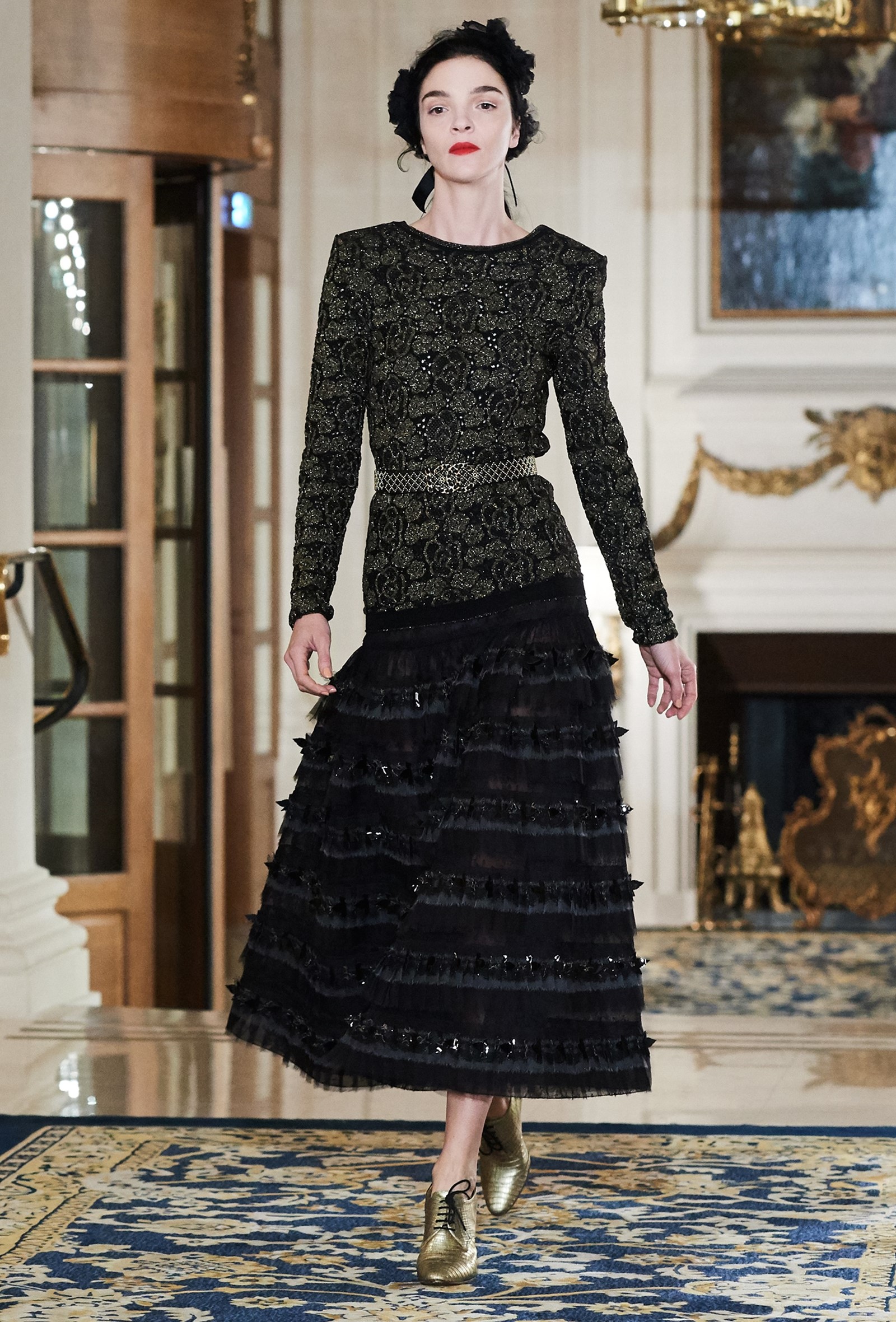The annual Chanel Métiers d’Art show is always among the year’s most unashamedly romantic occasions. This time more than ever, though, it felt like an uplifting and magical finish to a fairly cataclysmic 12 months. Shown at the Ritz hotel, it was called Paris Cosmopolite because, said Karl Lagerfeld: “This is about a hotel, in the heart of Paris, where women from the whole world used to come and experience la vie Parisienne even if they weren’t French.” The show was staged no less than three times in the glass-ceilinged Jardin d’Hiver and lobby of that newly renovated and quite mythical institution over lunch (yes, ladies who lunch), tea (Proustian, allegedly) and dinner. Models smiled and danced as they wound their way around the small candlelit tables at which guests were seated: “They used to dance during dinners, not only at balls,” M. Lagerfeld said. “They danced in restaurants; after they ate their dinner they danced. I think it’s very chic.” And so it most certainly was.
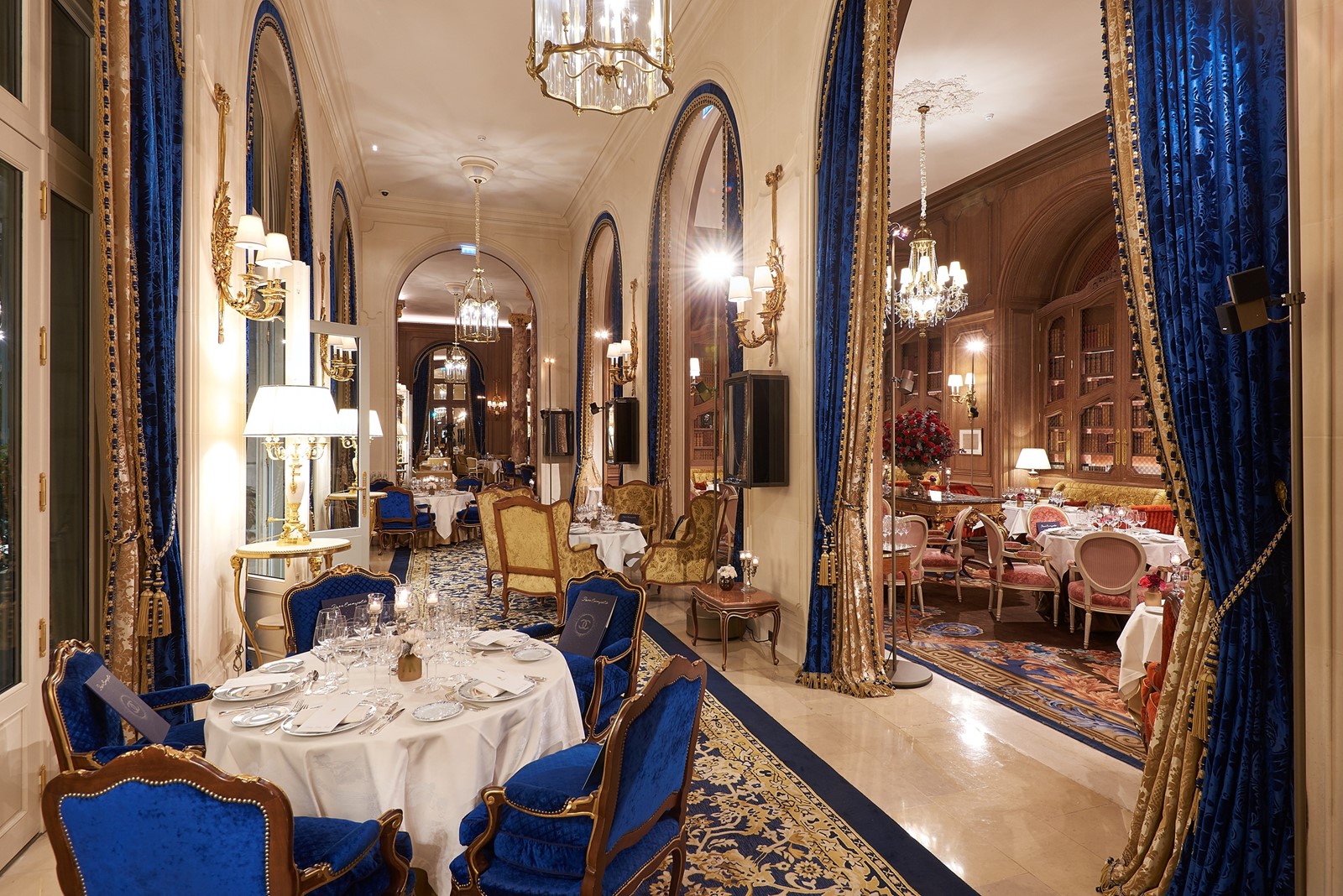
Some Fashion History
Gabrielle Chanel’s relationship with the Paris Ritz, located on Place Vendôme and a mere stone’s throw from her Rue Cambon store, studio and haute couture salon is an intimate one. When the hotel was created and named after Cesar Ritz in 1898, it was widely considered to be the most beautiful palace in the world. Built by Mansart, it was visited by international royalty and the intelligentsia alike. In the 1920s, Mlle Chanel took up residence there, crossing paths with Marcel Proust, also a regular habitué. She made it her permanent home in 1935, lodging her friend and collaborator Jean Cocteau there also for three months in 1939. The Chanel Suite at the Ritz was decorated with all her personal belongings: the famous Coromandel screens, crystal lamps, a plump suede sofa in her favourite shade: beige. A portrait of her by François Kollar was shot there in 1937 to promote Chanel No. 5. More images of her time there include her enjoying the company of Gala and Salvador Dalí. Today there is still a suite named after Chanel, overlooking Place Vendôme on the second floor and decorated to reflect her history and impeccable taste. “Nobody is more connected to the Ritz than Coco Chanel,” Karl Lagerfeld says.
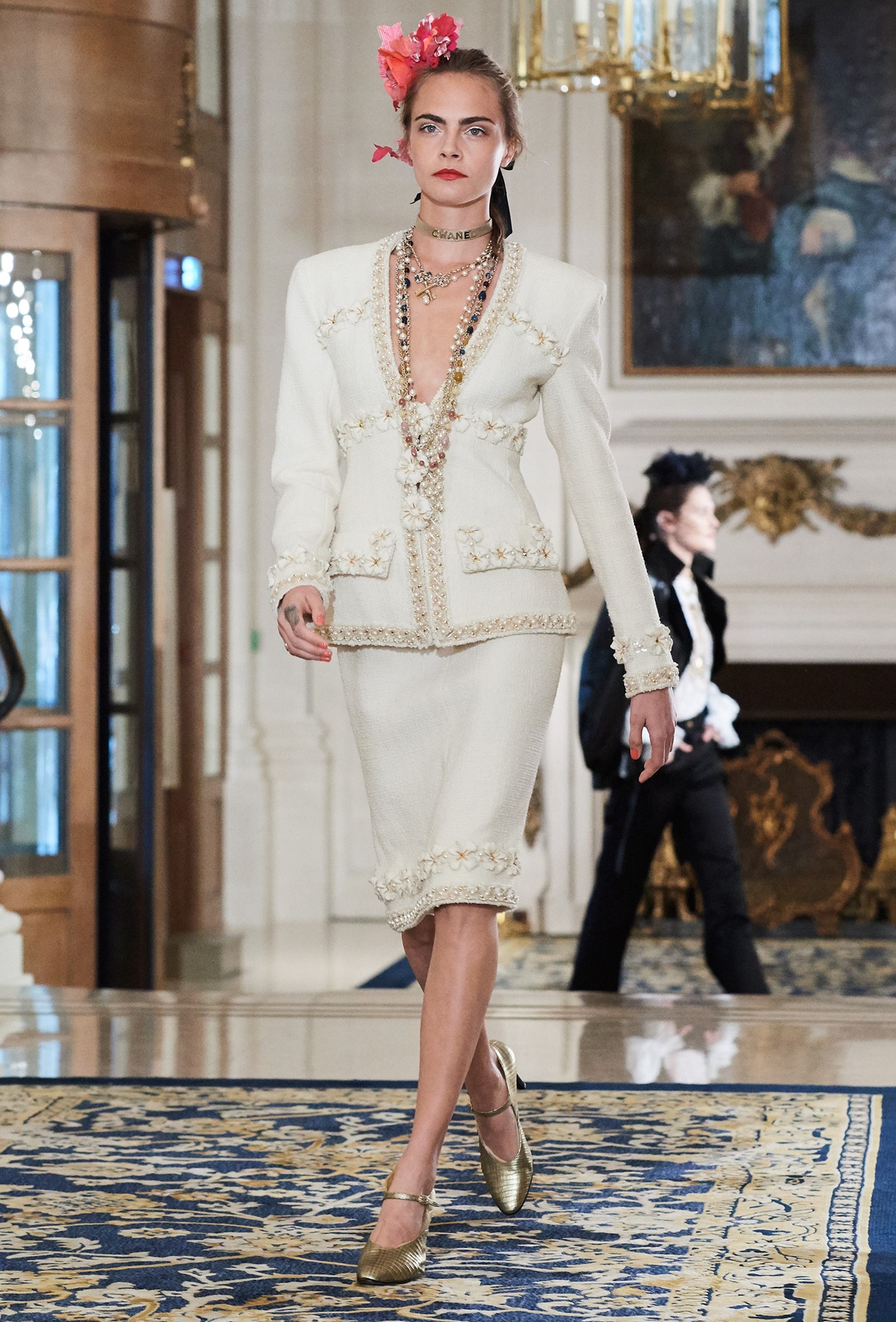
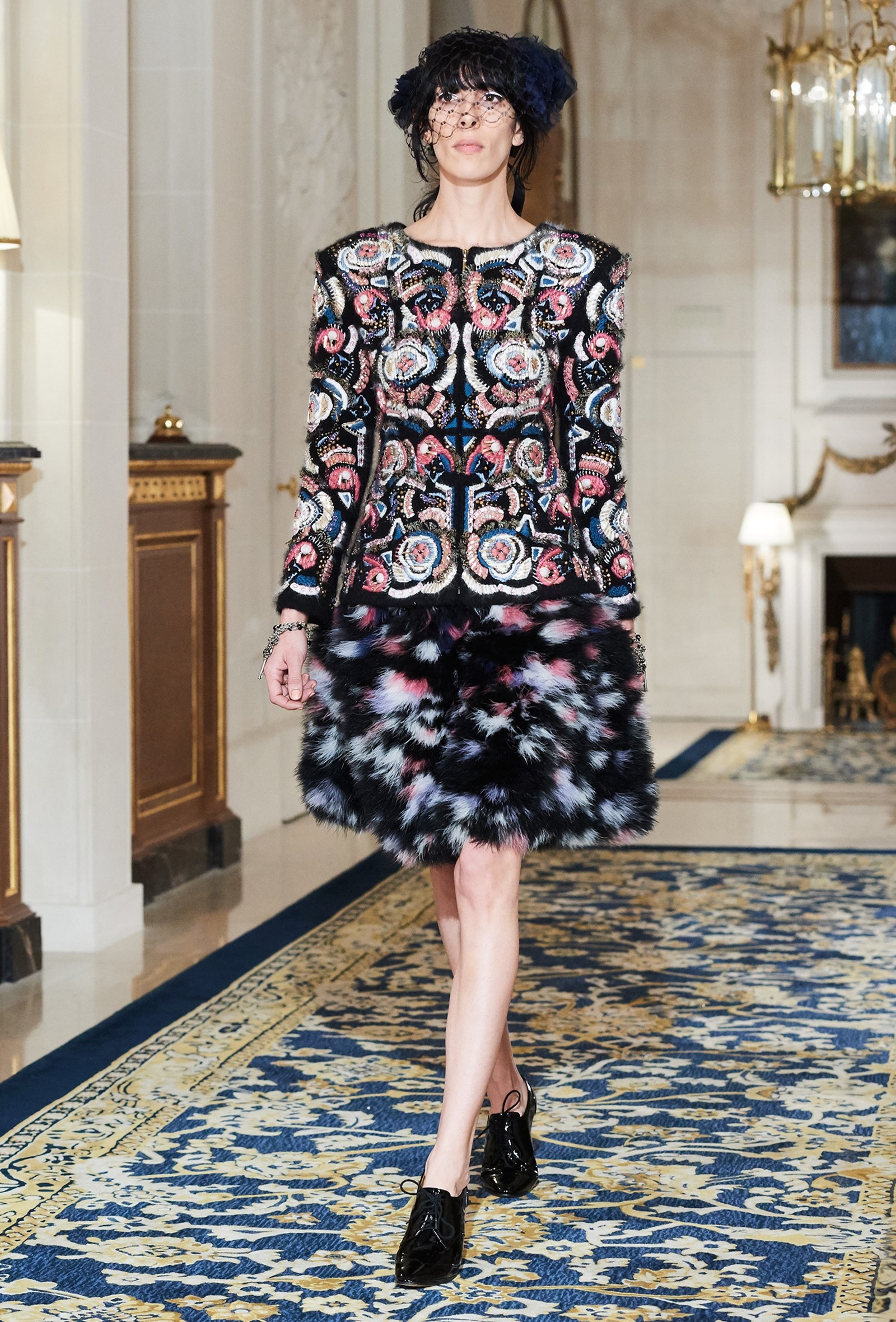
Puttin’ On The Ritz
The 1930s feel-good ode to high society penned by Irving Berlin was the finale soundtrack for the show, and it couldn’t have been more apposite. Of course, there were references to the hotel to be seen in the clothes also. “The rooms with white walls and gilded panelling and things like this,” Lagerfeld said. Imagine Chanel suits with a strong shoulder and nipped waist edged with finely worked gold, and pearl embroideries executed to a standard only the Chanel-owned Paris ateliers (for which the Métiers d’Art collection is a showcase) know how. More light-hearted: models had golden ring keys dangling around their slender necks. An especially opulent design, meanwhile, echoed the oriental shades of the aforementioned screens. Interesting to note: the mantra for the refurbishment of this great hotel was clearly, ‘why mess with perfection?’ It remains extremely similar to the original, only all shiny, fresh and new. That too seemed appropriate to Chanel. where Lagerfeld has constantly updated and added to the iconic house's codes throughout his long and grand career. “Perfect fits,” as the song goes. “Puttin’ On The Ritz.”
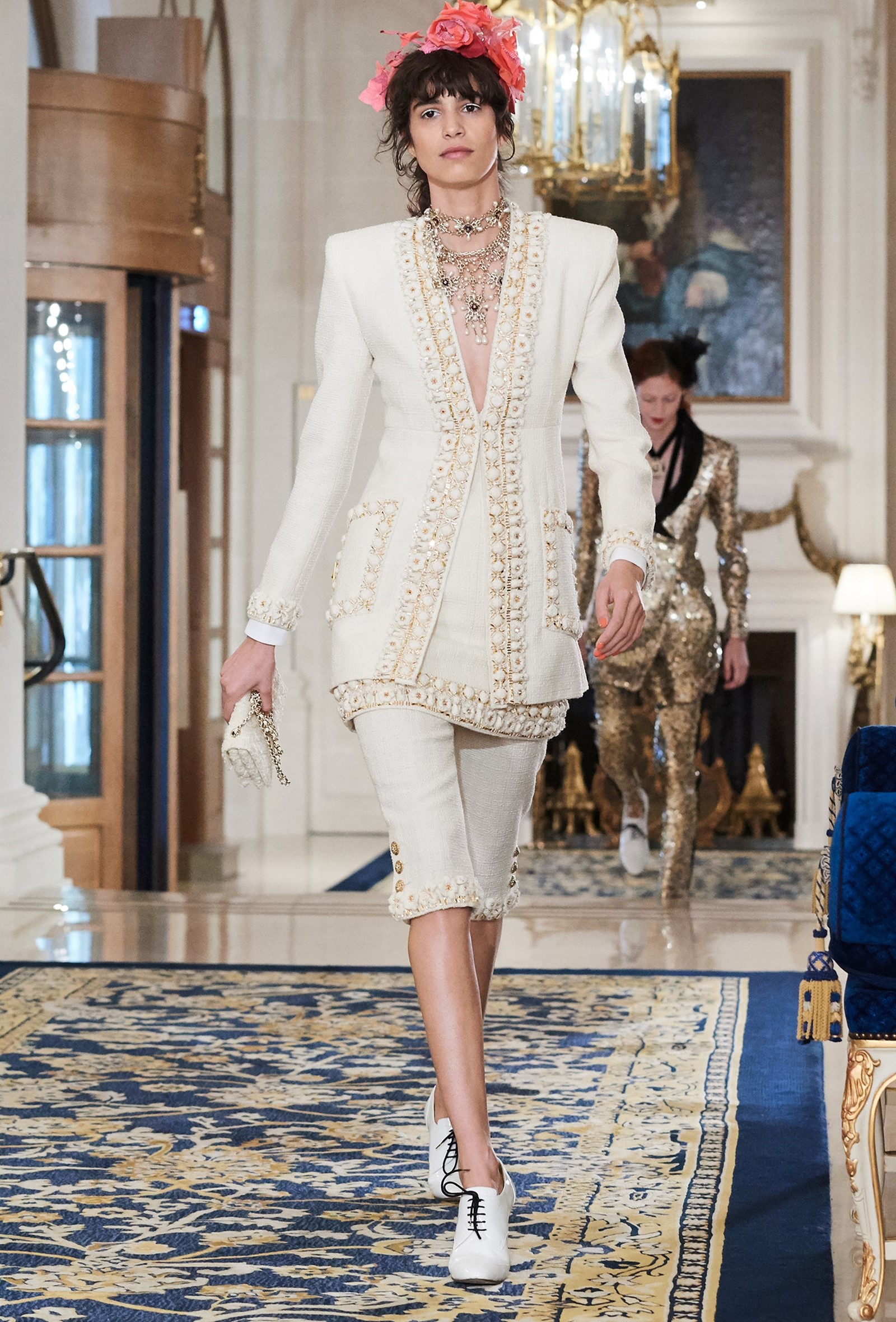
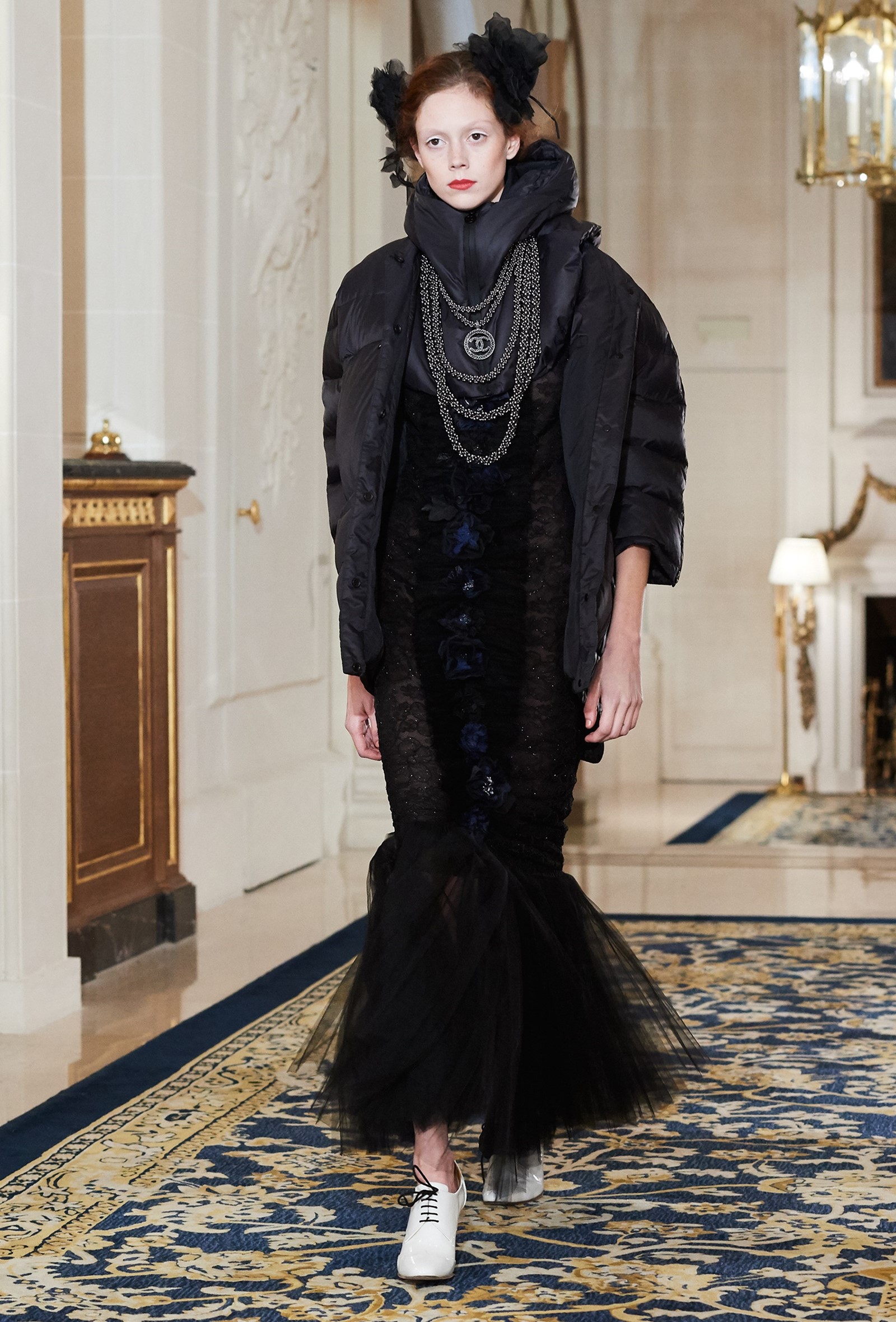
Quintessentially Coco
The great lady’s time-honoured signatures were everywhere. In M. Lagerfeld’s hands, the embroidered tweeds are more delicate than they ever were, with gently frayed edges. The same goes for the little black dresses, finished with the frills and flounces that were especially beloved by the house’s namesake in the 1930s. The quilting, famously expressed in the Chanel 2.55 bag, were here best seen in the form of oversized Puffa jackets – how much do we all want a Chanel Puffa jacket, Santa, please? – layered over the most exquisitely worked sweet nothings. Pearl necklaces are a similarly and reassuringly familiar Chanel trope. Models, sometimes with their faces veiled had red roses in their hair. “Coco Chanel did that too,” Lagerfeld says “You hardly see the camellia in her collections.” It was, however, fashion legend has it, her favourite flower. "This is something I pushed afterwards,’ the couturier continued. “But I liked the idea of the rose this time. There’s that famous line: a rose, is a rose, is a rose.”
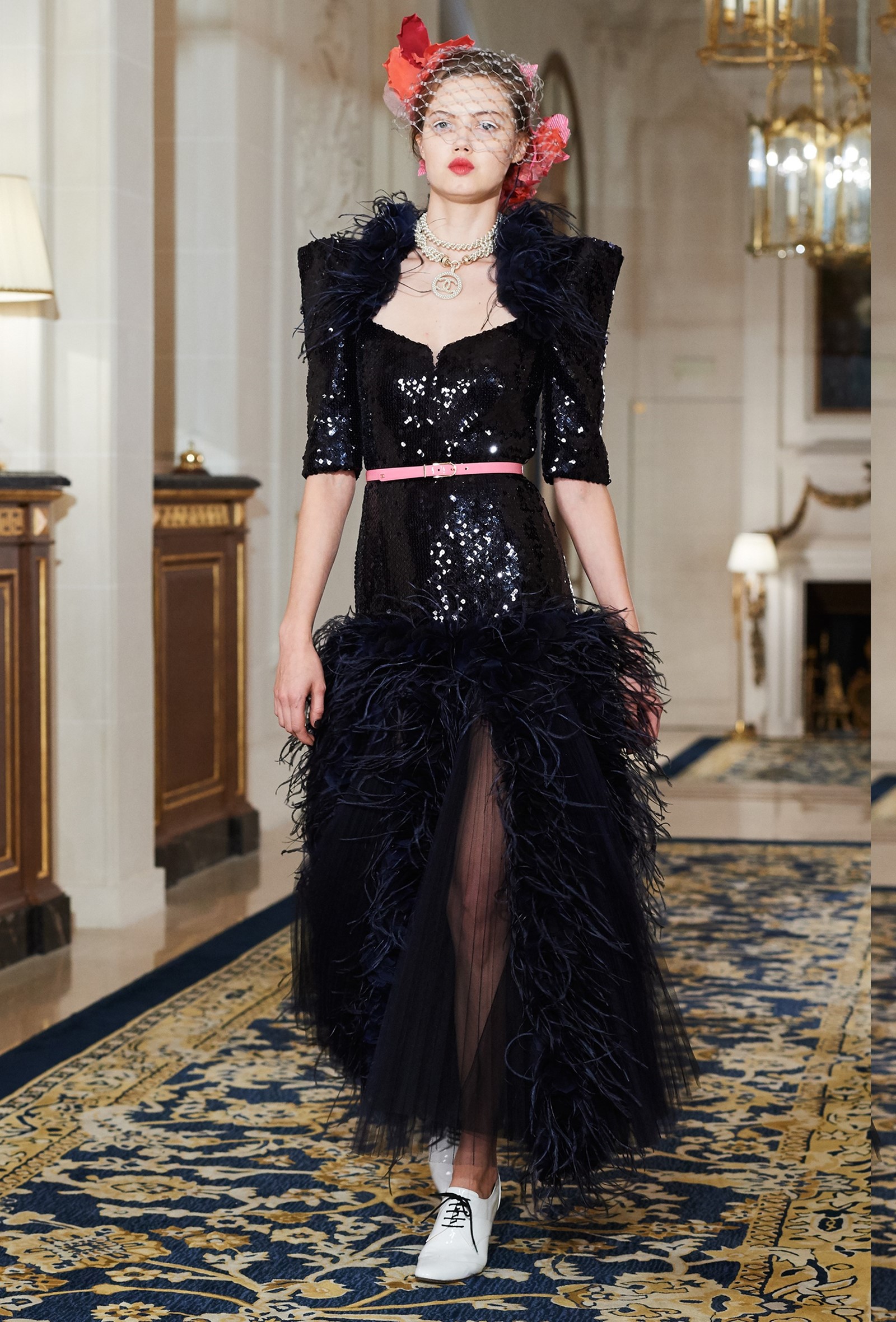
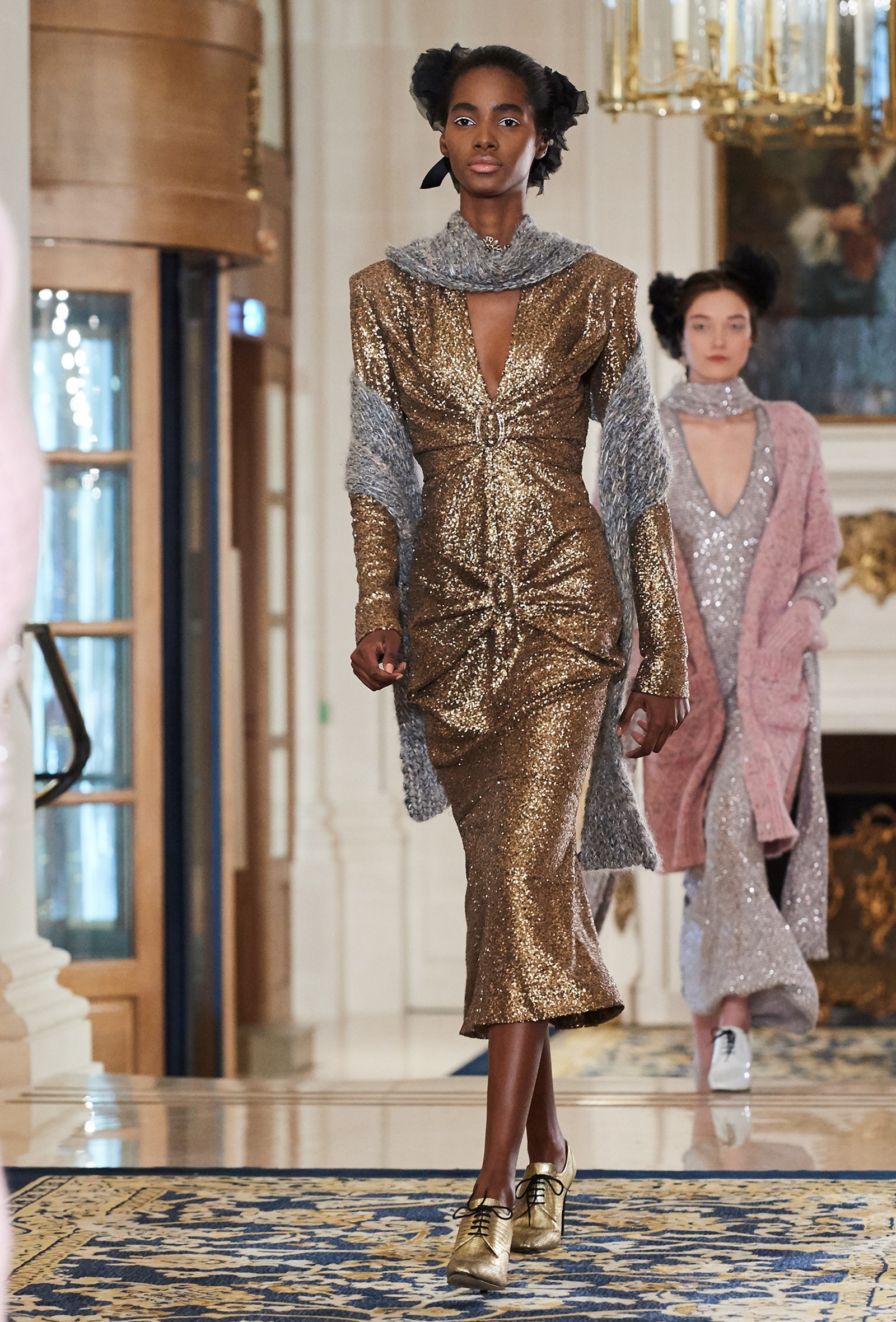
Disco Divas
Le Palace nightclub opened its doors in Paris in 1978, seven years after Coco Chanel died. Michel Gaubert, the brilliant brains behind the soundtracks for all Chanel shows, was a DJ there way back when and Karl Lagerfeld loves the era and the decade that followed. And so, if the sense of the 20s and 30s and the height of Café Society was very much part of this story – both in the staging and the sinuous silhouettes of many of the clothes – so was this later, equally wild and emancipated time. Black trouser suits, knickerbockers, baggy, thigh high boots, roomy leathers and more paid lip service: Café Society for a different age, then, perhaps.
Of the Métiers d’Art collection in general, Karl Lagerfeld had this to say: “It’s between couture and ready-to-wear. In the past the only people who could afford this level of workmanship had big money. Today you can buy it without having to wait for months to get your dress. It’s not for free but it’s a little less expensive than haute couture.” And of the spirit of this collection in particular: “You know the most important thing in life is to do the right thing at the right moment,” he said and no one else working in fashion has so finely honed and acute a sense of that. “The world is not fun at all,” Karl Lagerfeld concluded: “I think it’s a statement for a life in style and we should not forget that.” Perfect.
